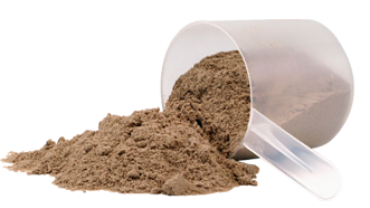
Did you know there's a chance you may be wasting money on your protein supplements? Over the past year there have been issues with what is known as "protein spiking" as well as with protein powders that failed to meet their label claims.
Protein spiking is adding some non-protein substances to a protein powder to increase the overall nitrogen content of that powder. Proteins are the only nutrients that provide nitrogen; carbohydrates and fats do not. In the dietary supplement and food industries the current standard used to test for protein analysis measures the total nitrogen in protein products. Since this test determines the nitrogen content it is then used to calculate the total grams of protein in a protein supplement. This has created an easy way to manipulate the final test result by spiking the protein with other compounds that contain enough nitrogen to artificially inflate the final protein results. As a result the tests may indicate that a protein powder contains more protein then it actually does if the test measures a non-protein substance simply by its nitrogen content. Companies that spike their protein powders are well aware of this limitation in regards to testing methods and use it to their advantage.
In the past protein spiking has occurred by using the compound melamine which is dangerous. However this is not an issue in the industry anymore. More recently manufacturers have been spiking proteins powders with amino acids such as glycine and taurine. This method uses compounds that are inexpensive not toxic and are extremely easy to mask due to the product's flavor profile. In addition arginine and creatine have also been used. Arginine has approximately three times more nitrogen than whey protein and creatine has one and a half times the nitrogen content and at half the price. Protein spiking is a low-cost way to increase the nitrogen content without adding high-quality protein.
In some cases it may make sense to add an amino acid to a protein powder which should not be confused with spiking. For example adding an amino acid like glycine can improve the taste texture and consistency. This is important because compliance of a product oftentimes is based upon taste. However adding glycine should not be used to increase the nitrogen content and should not be calculated in the total protein present in the product.
There are many applications and benefits to amino acids; yet they do not have the same beneficial effects as whole proteins do. Proteins are digested and absorbed differently than amino acids. Di- and tripeptides from proteins are absorbed intact and then released as free-form amino acids or released into the circulation. Less than 1% of protein that passes through the gastrointestinal tract is lost in the stool. Free-form amino acids do not have the same high level of absorption as these large amounts of protein.
The best way to avoid products that have been subjected to protein spiking is to understand the basics of the product in question and to use NSF-GMP professional companies that conduct in-house testing on every lot of their protein powders for quality purity and potency. This would ensure that rigid standards are being adhered to and that the end product is what you are looking for.
By Dr. Michael Jurgelewicz